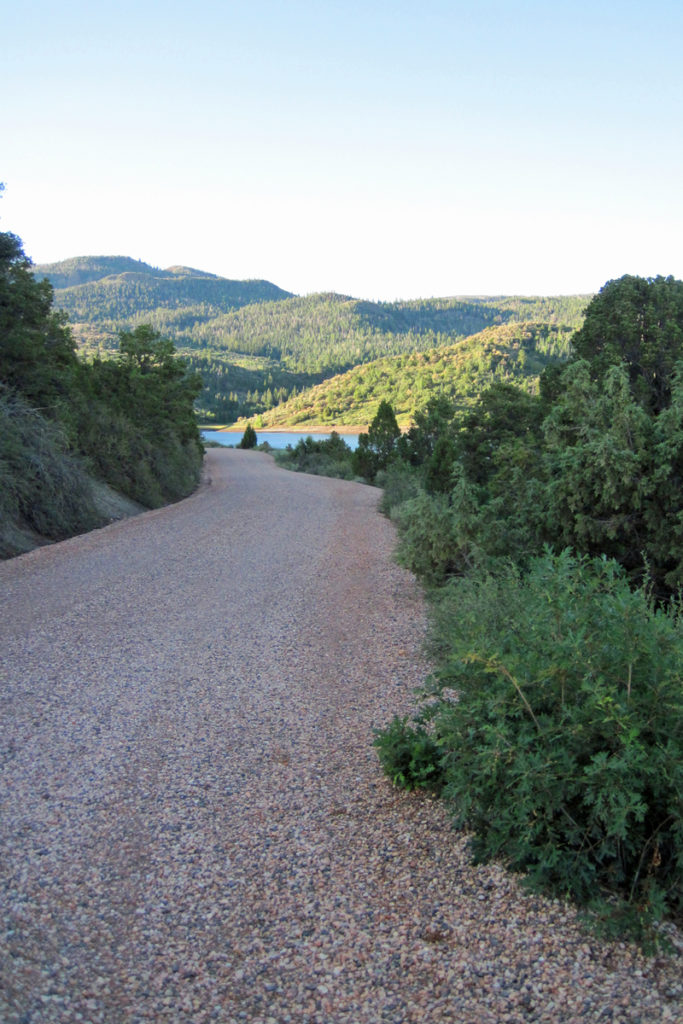
As a birthday gift to myself, I took a day off from work to make a fishing day trip. Although I have Fridays off, fishing on Friday is becoming much like fishing on Saturday used to look like. The 4/10 workweeks are more common now, and lots of others seeking more solitude start their weekend excursion on Friday. So, by exercising my birthday holiday on Thursday I got a jump on other enterprising anglers. On top of that, Mother Nature was running her summer monsoon routine and Thursday was forecast to be partly cloudy in the mountains of southern Utah, while the days surrounding Thursday were forecast with thunderstorms. It isn’t good to be waiving chrome-tipped fly rods in a lightning storm.
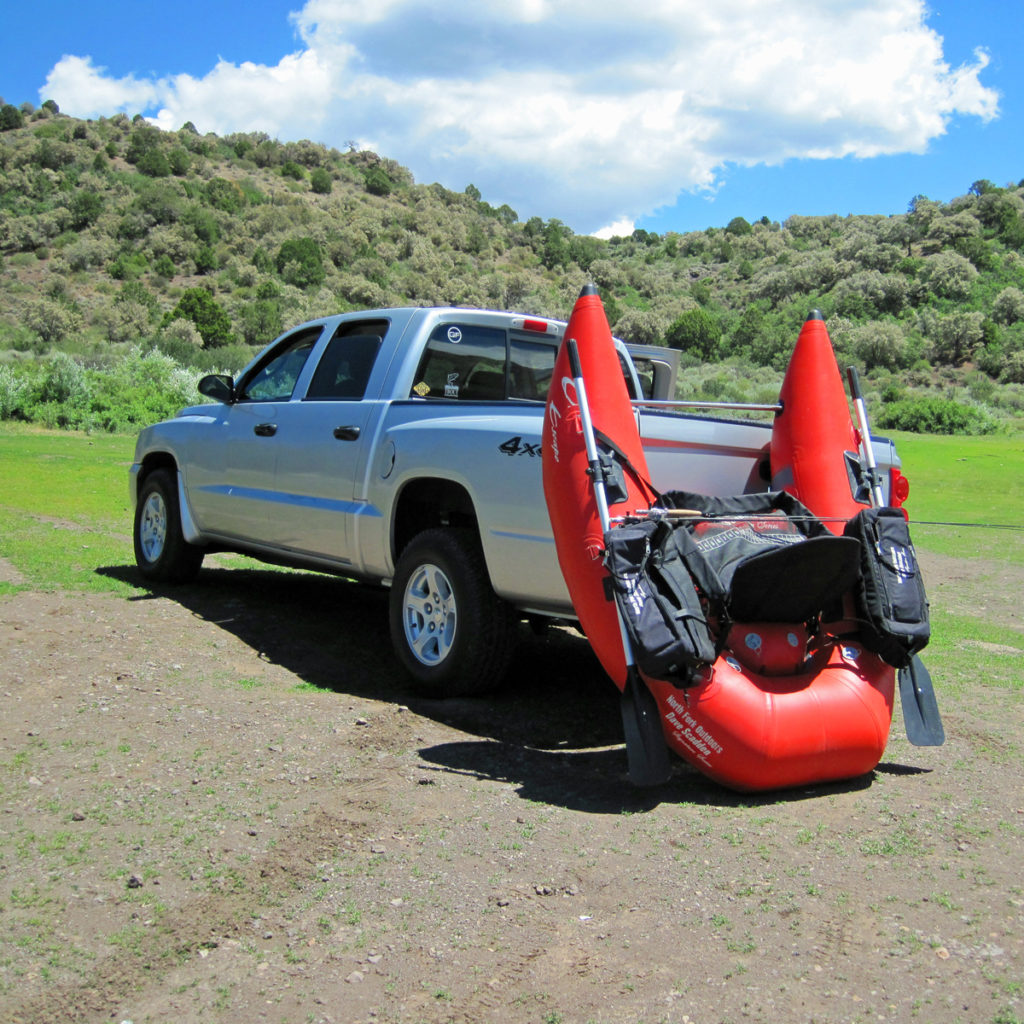
I decided to return to Red Creek Reservoir (i.e., Paragonah Reservoir) for several reasons. First, although the reservoir is over 200 miles northeast of Las Vegas, travel is ninety-five percent on I-15 which generally means a two-and-one-half hour trip. Second, the Utah Division of Wildlife (DOW) reported fishing at the reservoir to be good. Third, it seems to be a reservoir not well known by southern Nevadans who seem to opt for the Panguitch/Duck Creek areas to the south of Paragonah or the Beaver Mountain waters to the north. Lastly, I’ve only fished Red Creek once before on July 7, 2009 for two short hours, and although fishing was slow it seemed to hold promise.
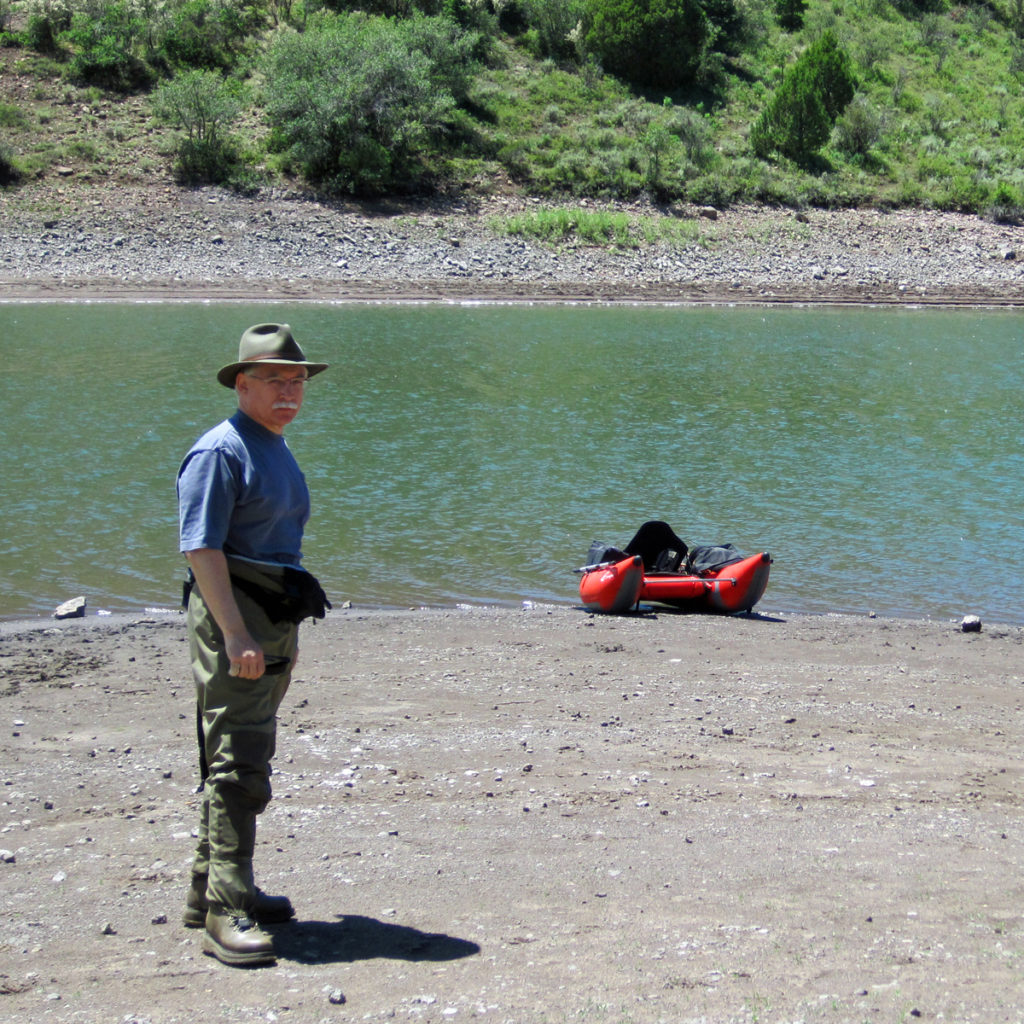
Red Creek lies in the northern portion of the Cedar City Ranger District, Dixie National Forest. The Dixie National Forest occupies almost two million acres between four Ranger Districts and stretches for about 170 miles across southern Utah. The largest national forest in Utah, it straddles the divide between the Great Basin and the Colorado River drainage; this is what southern Utah calls “Color Country.”
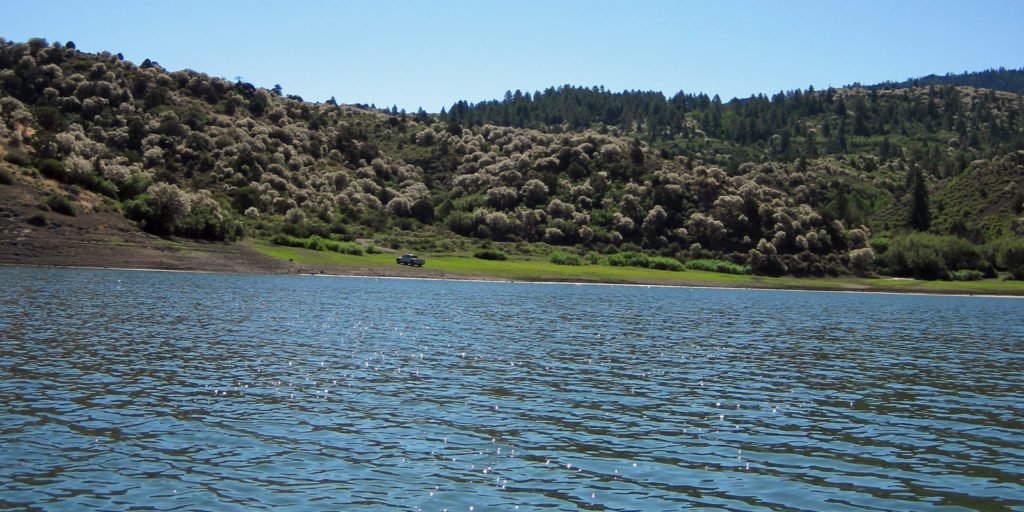
Nonetheless, I knew the daytime temperatures would get over ninety degrees because the reservoir is only at about 7,800 feet in elevation, and so I planned the trip such that I would get on the water no later than 7:00 AM. Originally, I wanted to lodge in Parowan Wednesday night, but apparently that was not to be. Consequently, my only choice was to awake at 3:15 AM and hit the road by 3:30 AM. If all went well I’d fish all day until about 5:30PM and return home by 9:00 PM or so.
The temperature at the reservoir was a cool 55 degrees upon arrival, which masked the truth about the oncoming mid-day heat. On the way up the Red Creek dirt road I noticed a few campers, which translated into a few shore fishermen at the reservoir (imagine what it might look like on Saturday!). The reservoir was very low, and there was a sort of mild algae bloom going on; currents containing millions of little dollops of algae clouded the water. Weed growth was not a problem, and while algae obscured visibility somewhat there was plenty of open water to fish.
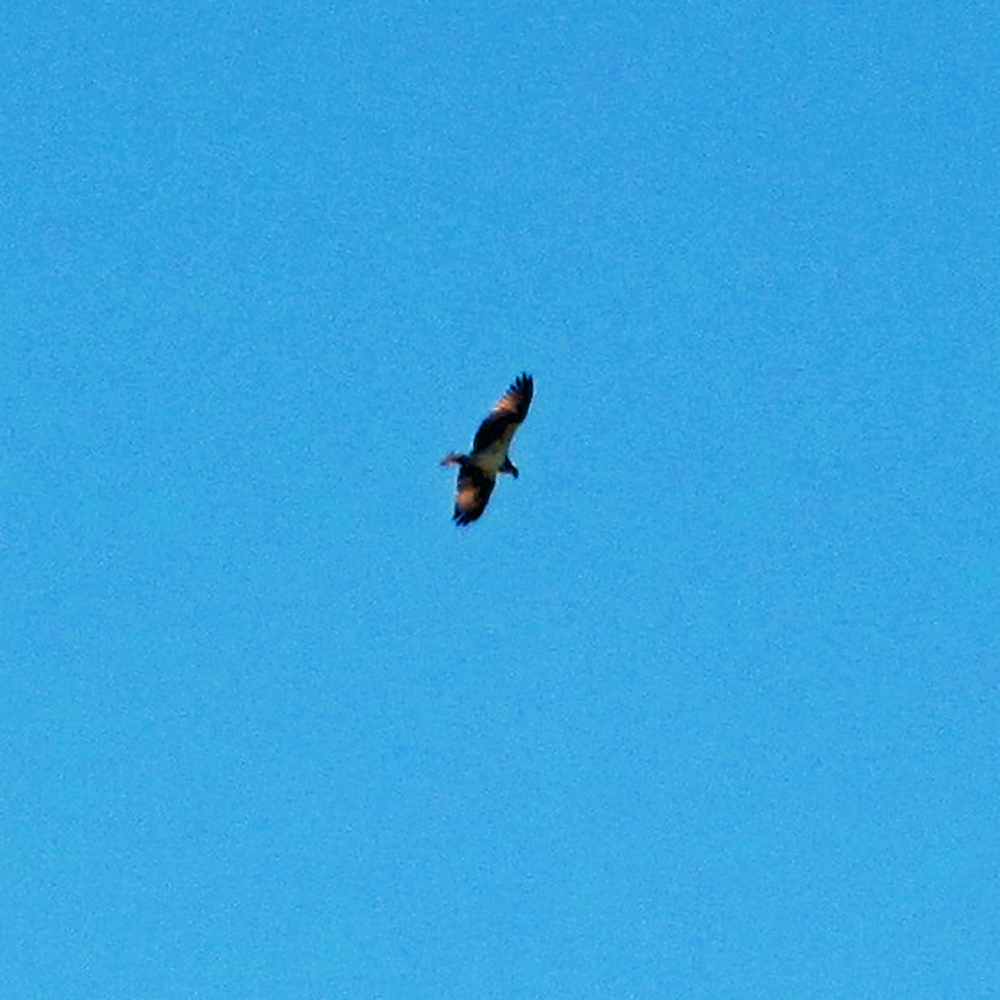
The fishing was slow, but I expected that. I knew the mid-summer water level would be low and the water temperature high causing the trout to hold in the lower depths. I did string up my 4-weight rod with a floating line, but I almost exclusively fished my 5-weight with a full-length fast-sinking line.
Upon arrival, parts of the northeastern shoreline near the inlet were still in the shade of the mountains, and there were trout working the shallows. I quickly inflated my North Fork Outdoors’ Outlaw Escape, donned my waders, and assembled my gear. It was then I noted that I failed to pack my kick fins. I have tube anchors, but I stopped bringing them because in high winds they don’t work that well, and in moderate winds I can use my fins to maintain position easier than the anchors. Not having the fins meant I’d be at the mercy of the winds while casting; this was very disappointing. But, the good news was that the Escape has its own integrated oar system (unlike other tubes such as the Fish Cat series), and the winds were mild. Nonetheless, you can’t fly cast while your hands are on the oars, and oars make more water noise than kick fins; this was a major blunder but it was not going to ruin the whole trip (I thought about driving into Beaver, UT to purchase another set of fins, but that would have wasted a couple of hours).
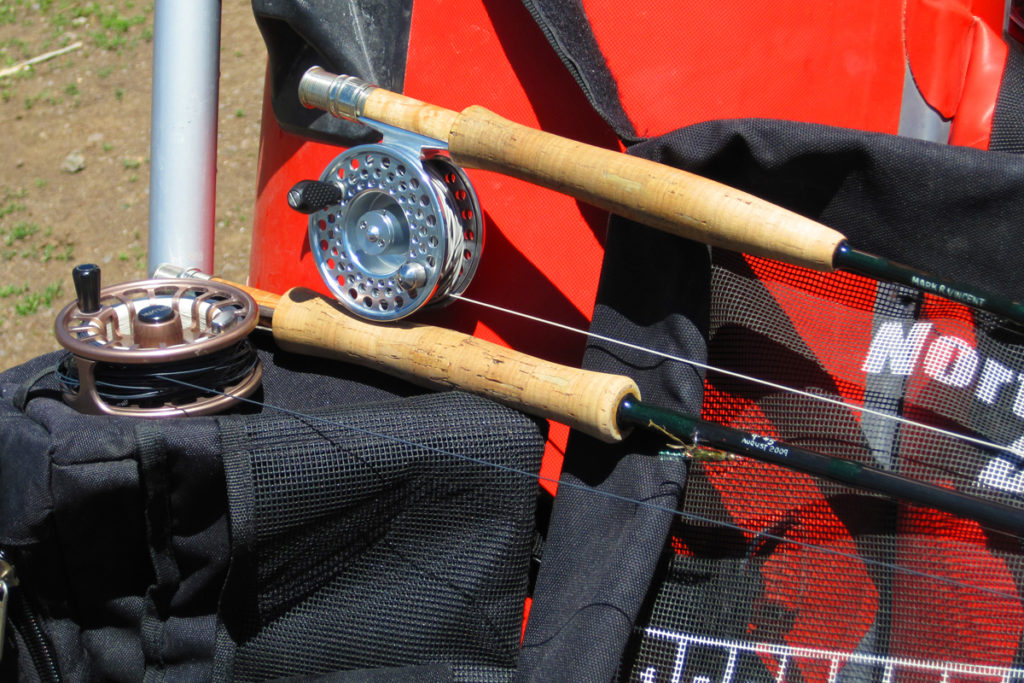
Immediately upon deploying the Outlaw Escape, I “oared” into position to cast my 4-weight with a size 16 black gnat over the trout working the bank. After a few casts I switched to a small nymph on the floating line to get it just under the water surface. Nothing, not even a detectable look. After a while I realized the shallow water made the trout very leery and my alternating casting/rowing (I had to maintain position…) was frightening the trout.
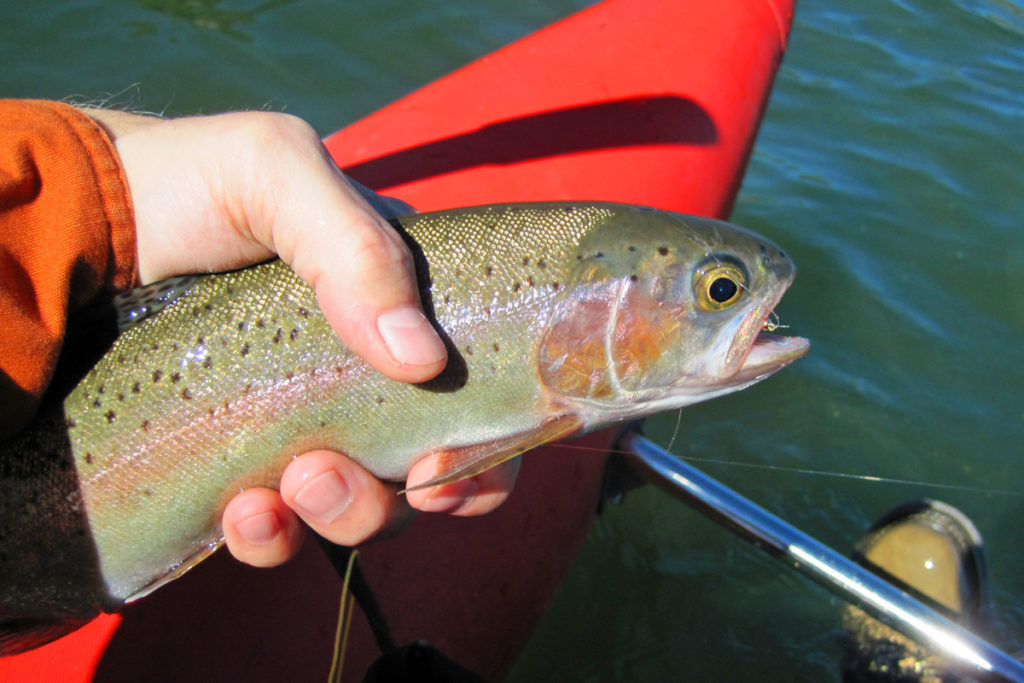
I swapped over to my 5-weight, full sinking rod and began casting into deeper depths. Within fifteen minutes I was into my first of the day, a nice tiger trout (sterile hybrid cross between brook and brown trout). It was beautiful, measuring over fifteen inches on my lap apron. Unfortunately, while I was fumbling to get the camera operational the trout flipped itself back into the water. Fishing catch & release dictates barbless hooks, or at the very least a squashed-down barb, and the consequences of that is the hooks often fall out when the line goes slack. The tiger trout was unexpected. The Utah DOW reports only indicate the presence of rainbow trout. In 2009 my first Red Creek catch was a small brook trout, and now in 2012 it was a tiger trout.
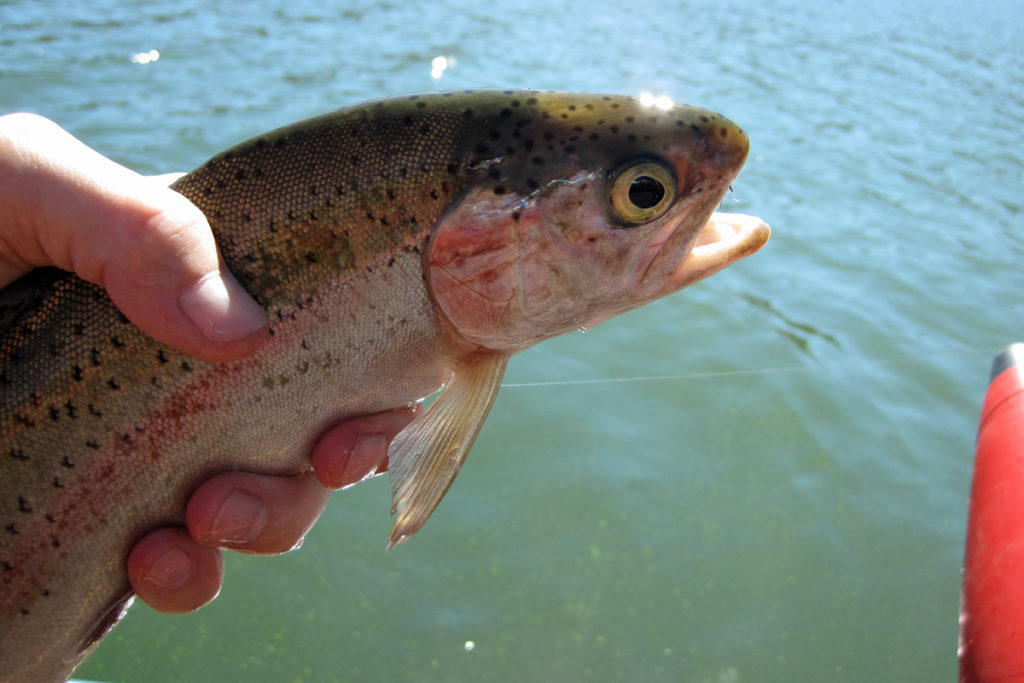
The remainder of the day produced slow and warm fishing conditions. In 5.5 hours of fishing I landed just seven trout, most in the twelve to thirteen inch range. I also hooked but lost three others, referred to as long distance releases (LDRs). The rainbows appeared to be wild trout (at least I’d like to think they were) as their coloring and spotting were richer than the typical stocked rainbow this late into the season, and more representative of their “wildness” was that all their fins were large and fully intact. In fact, all the trout I landed fought extremely hard, often creating an image of larger size than what actually came to the surface. As noted in the DOW fishing report, rainbow trout migrate from the reservoir into Red Creek in April and May to spawn, so my romantic assumption is that all the rainbow I caught were wild. As I have previously reported in other blogs, reservoir trout can sometimes seem to congregate in pods. Working the area and depth that produced the first fish often relinquishes others. That was certainly the case on this trip as the rocky bay on the southwest side, about 500 yards from the inlet, produced five rainbows landed in about ninety minutes of fishing (one every 20 minutes or so).
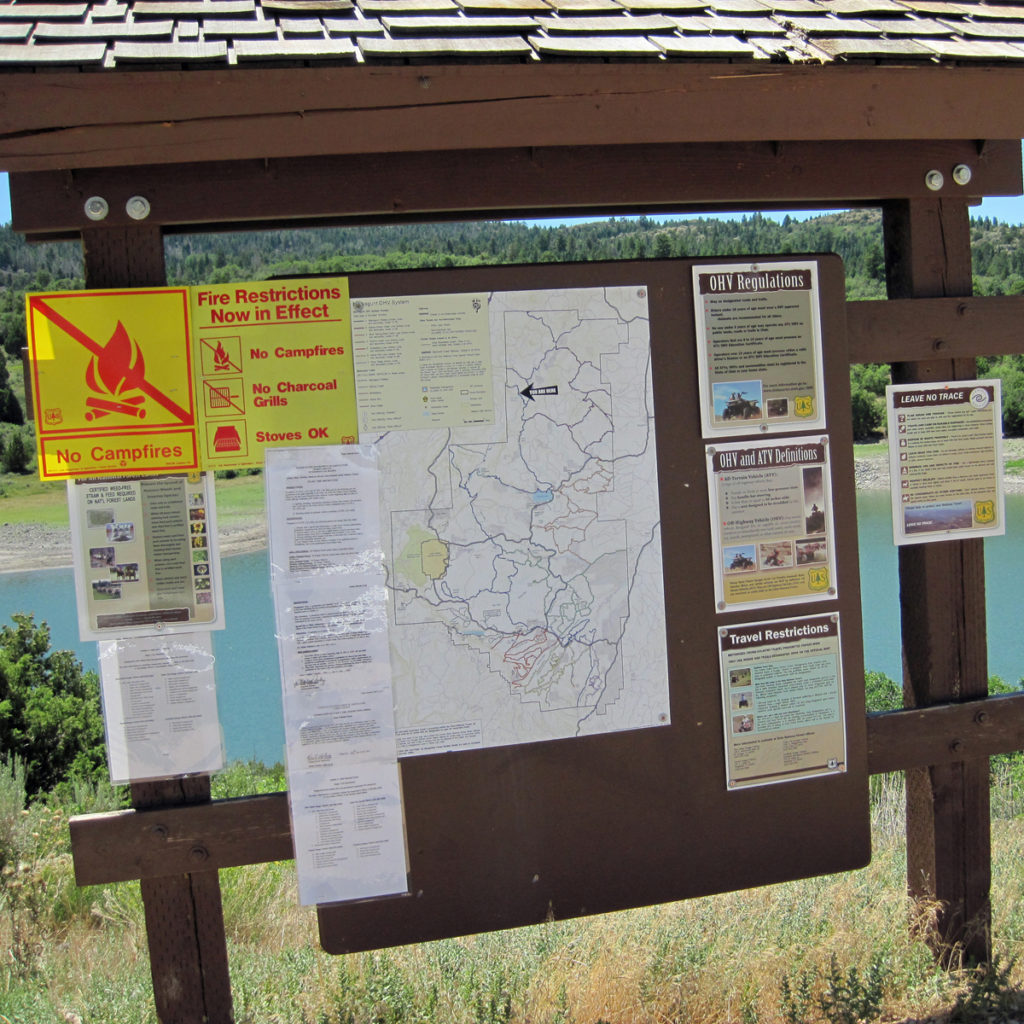
By 12:30 PM the heat and cloudless sky was getting the best of me. I thought about taking a two-hour nap in the shade of the truck before fishing the late afternoon, but I knew realistically that the fishing wouldn’t pick up until the sun set behind the mountains. That wasn’t going to happen until about 6:30 pm, and that translated into an arrival home closer to 11:00 pm (or an overnight stay in Parowan which wasn’t in the original plan with my wife). A twenty-hour day trip seemed too much for me, especially since I had a scant four hours of sleep the night before.
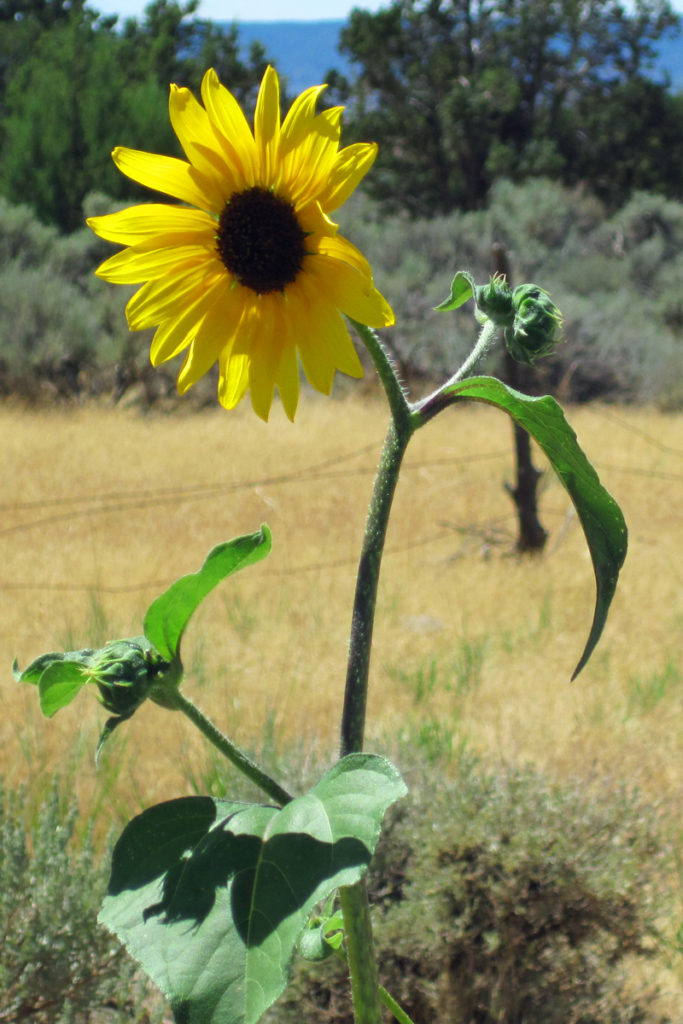
Despite the slower fishing, I can say the trout were respectable size and they fought very hard. The drive was scenic (well, at least once you pass Mesquite, NV) and the area around the reservoir was extremely relaxing in its solitude. The trip was a much appreciated birthday present.

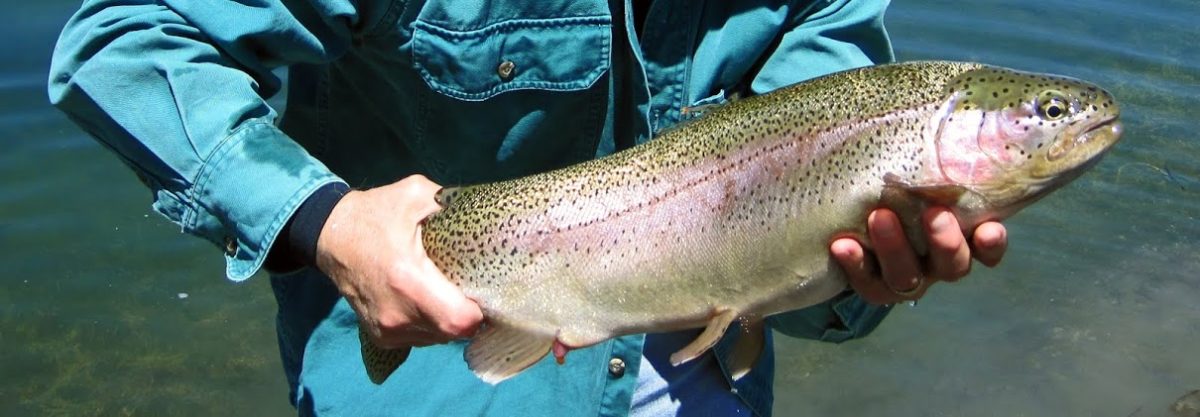
Love your blogs and am envious!
Glad you like them, Judy. Experiencing these naturally wonderful areas is a blessing; if you listen carefully you can hear nature screaming the name of its creator.
Mark,I'm so glad to see that you finally got another trip in. I wanted to try Red Creek out one day but it looks like I may have to wait until fall or next spring for some faster action. Hopefully you get out for some more trips this summer. -Chan
I currently have a float tube. Do you have any comments on the NFO Outlaw vs a float tube? Looks like you get oars and out of the water a bit?
Jeff —
Might want to check out this prior blog on the NFO Escape: https://www.fisherdad.com/2010/12/09/new-watercraft-wayne-kirch/.
The pros of the Escape over other float tubes like the Fish Cat are: (1) Integrated oars that lock in place for kick-paddling, (2) oars and rockered design make it scoot over the water much better than a pontoon boat, (3) it is very light and easily portaged by yourself if necessary, (4) extremely stable and whitewater Class III rated, and (5) footrest bar to rest feet out of the water.
The cons are (1) cost 2-3 times as much as a regular float tube, and (2) it is larger than a regular float tube so packing and storage might be an issue for some.
Note there are several models of the NFO Outlaw. I recommend the Outlaw Escape for reservoir fishing. The Escape is only 6’ long whereas the other Outlaw models range from 8.5 to 12 feet, great for heavier whitewater but too large for reservoir fishing, in my opinion.
I hope that helps. Let me know if you have other questions.
All the best.
My husband and I have fished there for 5 years now. Love,love it. Going again. Caught a lot of fish, nice size too. Some days had to put so many back. We caught a lot.
Jacki, I love your enthusiasm. I hope you continue to catch a lot of trout from Paragonah. Tight lines for you and your husband.